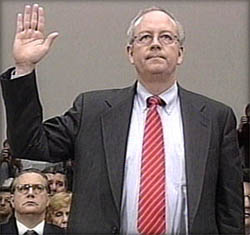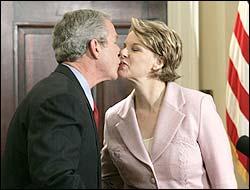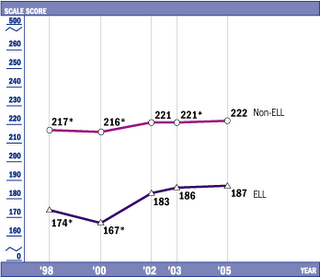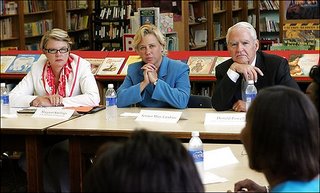showing charters worse or no better than regular public schools, and corporate charters fairing worse than other charters, one need look no further than Ohio to see these findings validated.
About 30 percent of Ohio charter school students attend schools in the state's lowest academic rating.
That's an improvement from last year -- when about 63 percent were in schools in the bottom rank.
Still, charter-school critics on Wednesday said the results are unacceptable.
The charter school ``experiment is a dismal failure,'' said Tom Mooney, president of the Ohio Federation of Teachers and a strong opponent of charter schools.
Mooney, at a press conference in Columbus, presented the results of a study comparing charter schools to traditional public schools on behalf of the Ohio Coalition for Public Education, made up of teachers unions, and other groups, including parent and civic organizations.
He was responding to school building and district report cards released Tuesday by the state.
= [100.0]Among the findings were:
• One in two charter schools are either in academic emergency or academic watch, compared to one in 11 traditional public school buildings.
• Three in four public schools are rated excellent or effective, while only one in six charter schools are in these top categories.
• Half of the 30 charter schools ranked as excellent are schools that were started by and answer to local boards of education.
Charter schools, which first opened in Ohio in fall 1998, are publicly funded but often privately run by self-appointed boards and for-profit corporations.
They were started as an alternative to low-performing traditional schools and free of many state regulations.
According to an Akron Beacon Journal analysis, 81 -- or about a third -- of rated charter schools are in academic emergency. Forty-six are in the next highest-rank of academic watch; 87 are in continuous improvement and 16 are effective. Thirty garnered the coveted excellent rating.
Ratings breakdown
Individual schools and districts receive ratings from the state based on three measures -- scores on state-mandated tests, as well as attendance and graduation rates; a performance index that gives credit for the performance of all students, even those who do not pass tests; and a federal standard called adequate yearly progress (AYP).
Under the federal No Child Left Behind law, schools and districts must show a certain level of achievement -- called AYP -- among all students, as well as subgroups of students, including African-American and disabled.
Schools -- including charters and districts -- face escalating penalties for not meeting AYP, including having to offer tutoring and losing federal Title 1 funds.
Akron is home to two of the state's largest charter school operators -- White Hat Management and Summit Academy Management.
Among White Hat schools, 21 are in academic emergency, four are in academic watch, seven are in continuous improvement -- akin to a C grade -- and one each are effective and excellent. The top-ranked school is the Cleveland Campus for grades nine to 12.
White Hat schools
White Hat spokesman Bob Tenenbaum pointed out that all but one of the White Hat schools in academic emergency are alternative high schools -- called Life Skills Centers -- that target dropouts or students at risk of dropping out.
``These are kids that for whatever reason -- I'm not assessing blame -- have been failed by the public traditional school system,'' he said. ``It shouldn't be a big surprise to anybody that their test scores are lower than the average school's with a much more homogenous student body.''
Tenenbaum said, ``there is a constant effort to improve curriculum and instruction to find ways to improve the test scores -- there's a state mandate to do that.''
Six of White Hat's Hope Academies and the company's online school increased their ratings. The online school and five Hope schools are in continuous improvement, and one -- the Akron University Campus -- is effective.
Tenenbaum said White Hat is lengthening the school day -- by 90 minutes at some, if not all, of the Hope Academies to allow more time for math and reading.
Ultimately, Tenenbaum said, test scores should not be the sole factor upon which charter schools are judged.
``The Hope Academies are full, so something is going on in those schools that parents like... maybe there's a fear factor, maybe people feel that their kids are safe in these schools.''
Among the Summit Academy schools, nine are in academic emergency, five are in academic watch, nine are in continuous improvement and one each are in effective and excellent.
Three of Summit Academy's schools that were rated both last year and this year improved.
Some charter schools did not receive academic ratings because they haven't been in operation for at least two years or didn't have the minimum number of students taking tests.
Summit Academy
``Overall, I think we are very encouraged by the results of our report cards,'' said Jim Bostic, Summit Academy's executive director of academic services.
He said Summit Academy plans to do a better job of gauging students' progress with a new assessment tool developed by the Northwest Evaluation Association.
Students will be tested at the beginning of the year, in January and just before they take the state-mandated exams in the spring. Teachers will be able to quickly address gaps in learning by tailoring instruction.
``It permits directed, prescribed instruction exactly as the student needs it,'' Bostic said.
Bostic said that Summit Academy caters to students with disabilities -- specifically those with attention deficit disorder and Asperger's, a form of autism.
``We know that many of our kids come in from other districts two to three years behind,'' he said. ``Our job is to find a way to accelerate their learning. We are showing that happening. We will eventually get those students caught up.''
Long way to go
Many charter schools have a long way to go, according to the Beacon Journal analysis.
Nearly 32 percent of the 260 charter schools receiving ratings this year met none of the state's 25 performance indicators, which are based on scores on state-mandated tests and attendance and graduation rates. That figure is up from about 29 percent in the prior two school years.
Mooney, the charter-school critic, said White Hat's 21 Life Skills schools as a group met only one of a combined 166 indicators.
``Ohio taxpayers deserve a better return on their investment,'' said Carol Gibson, co-president of the League of Women Voters of Ohio, in Columbus.
Stephanie Warsmith can be reached at 330-996-3705 or swarsmith@thebeaconjournal. com. Katie Byard can be reached at 330-996-3781 or kbyard@thebeaconjournal.com. Beacon Journal Columbus bureau chief Dennis Willard and computer-assisted reporting manager David Knox contributed to this report.
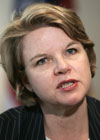 I guess you could say it is DBA (Dead Before Arrival), since the final Report will not be released until September. From the Daily Pennsylvanian:
I guess you could say it is DBA (Dead Before Arrival), since the final Report will not be released until September. From the Daily Pennsylvanian:
